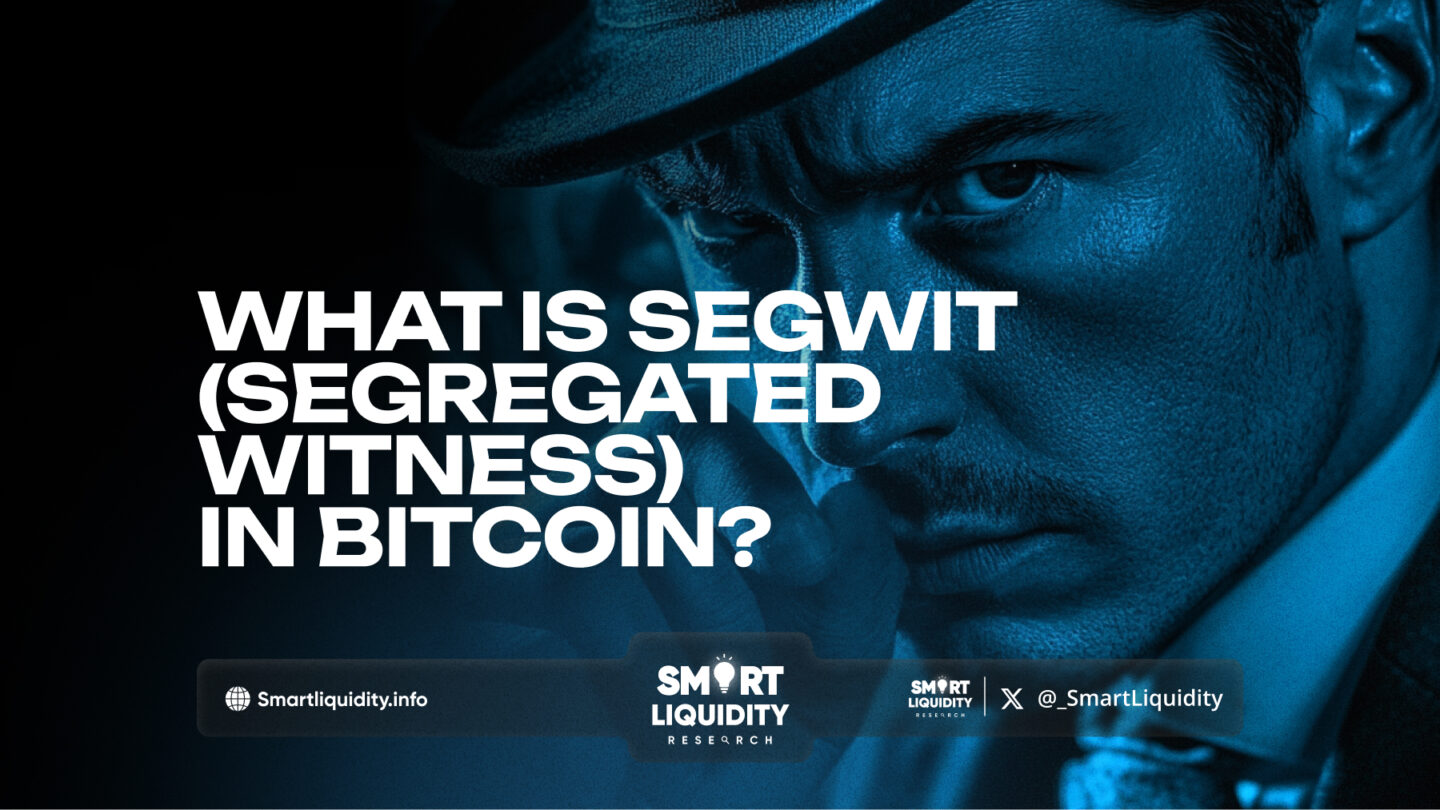What is SegWit (Segregated Witness) in Bitcoin?


Bitcoin, the first blockchain technology, has evolved to tackle scalability and usability issues. A major milestone was Segregated Witness (SegWit), launched in 2017 to improve the network by fixing transaction malleability and boosting the effective block size. This article explores SegWit’s role, significance, and effects on Bitcoin.
Understanding Segregated Witness
Segregated Witness, often abbreviated as SegWit, is a protocol upgrade that separates the transaction signatures (“witness data”) from the transaction data. In simpler terms, it modifies how transaction data is stored within a block, effectively increasing the number of transactions that can fit in each block without altering the actual block size limit.
To comprehend SegWit, it’s important to understand its key components:
- Witness Data: This includes digital signatures used to validate transactions.
- Segregation: By segregating or separating this witness data, the effective size of each transaction is reduced.
This optimization not only enhances Bitcoin’s scalability but also lays the groundwork for further innovations.
Why Was SegWit Introduced?
The introduction of SegWit was driven by several pressing issues:
- Transaction Malleability: Before SegWit, transaction IDs could be altered due to the way signatures were included in the transaction data. This loophole allowed bad actors to manipulate the IDs, creating complications in second-layer solutions like the Lightning Network.
- Scalability Concerns: Bitcoin’s block size was limited to 1 MB, constraining the number of transactions that could be processed per second. SegWit effectively increased the block capacity by excluding signature data from the base transaction data.
- Future Enhancements: SegWit’s implementation paved the way for innovations like Schnorr signatures and Taproot, which further improve Bitcoin’s privacy, efficiency, and functionality.
How Does SegWit Work?
The key to SegWit’s functionality lies in its ability to restructure Bitcoin transaction data. Here’s how it works:
- A standard Bitcoin transaction consists of an input (where the funds come from), an output (where the funds go), and a signature (to validate the transaction).
- SegWit removes the signature data from the main block and stores it in a separate data structure called the “witness.”
- By doing so, SegWit transactions occupy less space within a block, allowing for more transactions to be included.
Below is a table illustrating the difference between legacy transactions and SegWit transactions:
| Feature | Legacy Transaction | SegWit Transaction |
| Data Structure | Combined transaction & signature | Segregated transaction & witness |
| Block Size Limit | 1 MB | Up to ~4 MB (effective weight) |
| Transaction Malleability | Vulnerable | Fixed |
| Efficiency | Lower | Higher |
Benefits of SegWit
The implementation of SegWit brought numerous advantages to the Bitcoin network:
Increased Transaction Throughput
SegWit’s restructuring of transaction data effectively increased the number of transactions that can fit in a block. While the block size remains limited to 1 MB, the additional witness data enables an effective block weight of up to 4 MB.
Enhanced Security
By addressing transaction malleability, SegWit bolsters the security of Bitcoin transactions. This improvement is critical for second-layer solutions, which rely on transaction integrity.
Reduced Fees
SegWit transactions are smaller in size, leading to lower transaction fees. This reduction benefits users and incentivizes the adoption of SegWit-compatible wallets.
Enabling Future Upgrades
SegWit’s implementation set the stage for future enhancements like Taproot and Schnorr signatures, which further improve Bitcoin’s efficiency, scalability, and privacy.
Adoption of SegWit
Despite its benefits, the adoption of SegWit has been gradual. Some of the factors influencing its adoption include:
- Wallet Support: Wallet providers need to implement SegWit compatibility for users to benefit from it. Over time, most major wallets and exchanges have adopted SegWit.
- User Awareness: Many users are unaware of the advantages of using SegWit, slowing its widespread adoption.
- Network Effects: As more users and services adopt SegWit, its benefits become more pronounced, creating a positive feedback loop.
Below is a summary of SegWit adoption statistics:
| Year | SegWit Adoption Rate |
| 2017 | ~10% |
| 2019 | ~40% |
| 2023 | ~80% |
Criticisms and Challenges
While SegWit has significantly improved the Bitcoin network, it’s not without criticism:
- Complexity: The separation of witness data adds complexity to Bitcoin’s architecture, making it harder for new developers to navigate.
- Partial Adoption: Despite its advantages, not all wallets and exchanges have adopted SegWit, leading to inefficiencies.
- Debate Over Block Size: Some critics argue that increasing the actual block size, instead of introducing SegWit, would have been a simpler solution to scalability issues.
Conclusion
Segregated Witness (SegWit) represents a milestone in Bitcoin’s evolution. By addressing transaction malleability, increasing scalability, and paving the way for future enhancements, SegWit has solidified its role in improving the Bitcoin network. While challenges remain, its gradual adoption highlights its importance in the broader context of blockchain technology. As Bitcoin continues to evolve, SegWit’s impact will remain a testament to the ingenuity of the cryptocurrency’s development community.




